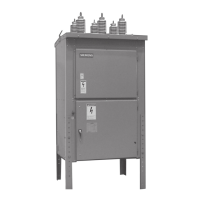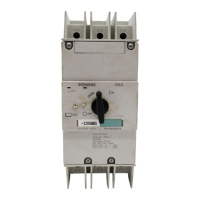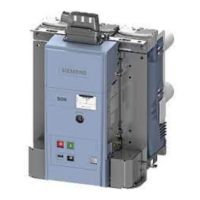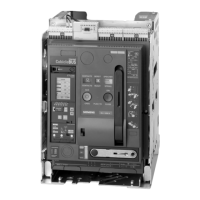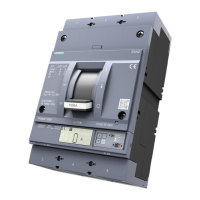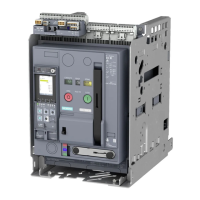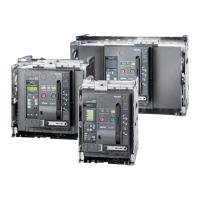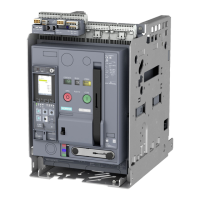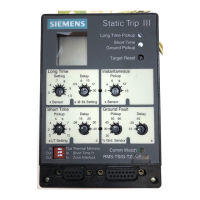Electrical connections
Hazardous voltages and high speed moving parts.
Will cause death, serious injury or property damage.
Do not work on energized equipment. Always de-energize and
ground high-voltage conductors before working on or near them.
The user must adjust the circuit breaker height to ensure
compliance with safety codes for electrical clearance.
Secondary control wiring
All secondary control wiring installed by
the factory is neatly routed and secured in
place. Complete all field connections in a
similar manner. Check that the protective
relay panel (if so equipped) clears any
additional wiring installed.
A conduit panel opening is provided in the
bottom of the low-voltage compartment
for the connection of control circuits. The
control wires should be run separately
from high-voltage wiring to prevent
inductive coupling between them and
should be sized for full operating current
to avoid a drop in voltage below that
specified on the nameplate. All conduits
should be sealed off at their entrance to
the low-voltage compartment.
Terminal blocks are provided inside the
control or operator compartments for the
connections necessary for the control
wiring, bushing current transformers and
protective relay panel (if so equipped).
Terminal blocks for current transformers
wiring are located in the operator
compartment and wires can easily be
routed from the conduit panel opening in
the low-voltage compartment to the
current transformer circuit terminal blocks
Consult the connection diagrams for the
location of connection terminal points for
each circuit.
Connection diagrams are provided with
each type SDV6 distribution circuit breaker
and will be found in the pocket inside the
operator compartment door.
Primary lead connections
The primary leads must be routed to the
bushing terminals so as to maintain
adequate dielectric clearance between
different phase conductors and to ground.
Conductors must be supported so that the
circuit breaker bushings are not subjected
to excessive strains, both during normal
service and in the event of a short-circuit
condition. The leads should be sized to
have a capacity at least equal to the
maximum operating current of the circuit
and within the rating of the type SDV6
distribution circuit breaker. Connections
are to be made to the bolted terminals of
the bushings and must be securely
tightened to a clean, bright surface to
assure good contact.
Ground connections
Diagonally opposite grounding pads are
provided for connecting the cabinet to
ground, using at least a 4/0 AWG
conductor on each ground pad. A good
low-resistance ground is essential for
adequate protection and for proper
functioning of electronic components such
as protective relays. Connections to ground
pads must be made in such a manner that
a reliable ground connection is obtained.
Consult latest National Electrical Code® or
National Electric Safety Code® for ground
connection standards.
15
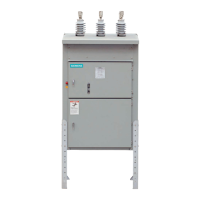
